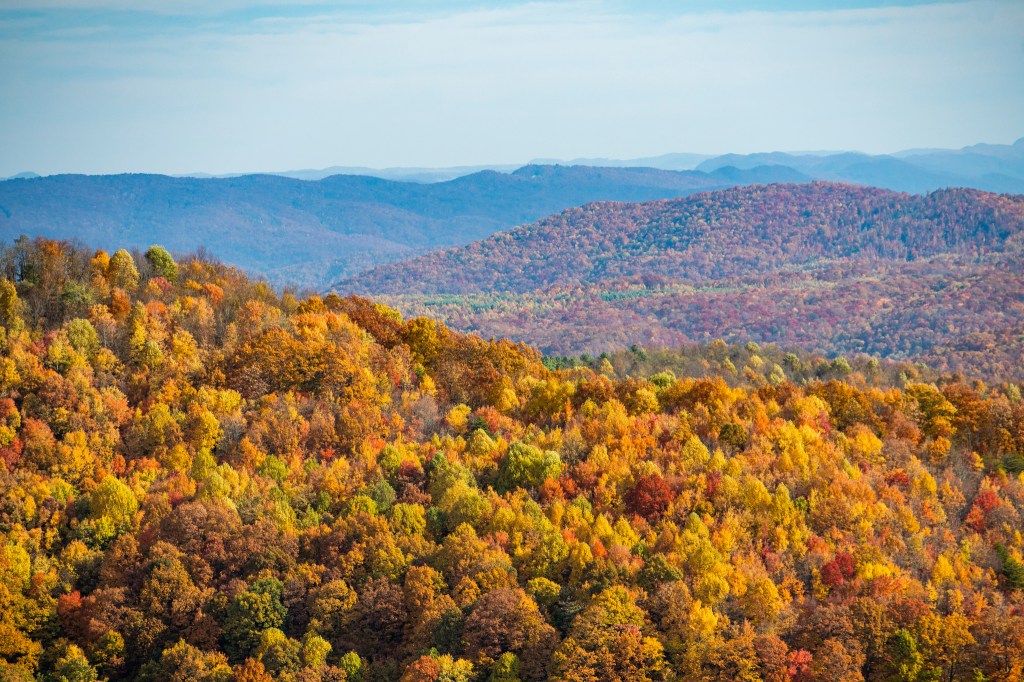Group secures largest conservation easement in Kentucky history
Published 2:29 pm Thursday, December 21, 2023

- Cumberland Forest Wildlife Management Area, a 55,000-acre property, is now permanently protected through a conservation easement held by the Department of Kentucky Fish and Wildlife Resources.
Tuesday, the Kentucky Department of Fish and Wildlife Resources, The Nature Conservancy and the Rocky Mountain Elk Foundation announced that they had secured the largest conservation easement in Kentucky history.
The 55,000-acre Cumberland Forest Wildlife Management Area includes areas of Bell, Knox and Leslie counties in Appalachian Kentucky.
Conservationists say that the Appalachian Mountains are a critical area to protect, as a key migratory corridor for a variety of wildlife. They are some of the most intact temperate hardwood forests remaining in the world, according to TNC.
What is a conservation easement and how does it work?
Landowners can sell rights to various parts of their land, like mineral rights or easements to allow a phone company to run a line across their property.
A conservation easement is a legal agreement that gives the purchaser development rights, with restrictions on how the property can be managed or used in order to protect natural resources.
Even if the land switches owners, the conservation easement holder will maintain those rights. Its purpose is to provide permanent protection and public access to a property, said TNC State Director David Phemister.
“It’s a way to permanently protect the property without actually transferring the underlying fee, title, interest of the property,” he said.
Phemister said that they’ve been working on securing this conservation easement since 2019, when they acquired the 55,000-acre property in Eastern Kentucky.
While the easement restricts large scale development and subdivision, it maintains the land’s recreational use. The area is a popular hunting, trapping, fishing, hiking, camping and mountain biking spot.
Kentucky Fish and Wildlife is the conservation easement holder. While they had an annual deal with the current landowners, TNC, allowing them to provide public access, this deal makes it permanent.
Why is this important?
The deal will allow Kentucky Fish and Wildlife to do more management work on the land to protect habitats of elk and other wildlife, including quail, wild turkeys and songbirds, said Ben Robinson, director of the wildlife division.
This might include prescribed fires, eradication and control of exotic and invasive species and research on the area’s elk population. KFW can also invest in better signs and trails for recreational users.
But it also benefits all Kentuckians, Robinson said.
“With approximately 95% of Kentucky in private ownership, public access is extremely important, and so this is a huge win for anyone who enjoys spending time outdoors in the state of Kentucky,” he said.
Phemister said that protecting a property of this size — the acreage is equal to 7% of Rhode Island’s landmass — is an increasingly rare opportunity as land continued to be subdivided into smaller and smaller parcels.
“Some of those parcels are developed,” Phemister said. “Some of them may not necessarily immediately be developed, but it makes doing holistic forest or habitat management much, much harder if you’re trying to piece together that opportunity 50, 100, 1,000 acres at a time.”
The easement also presents economic benefits. Wildlife-related recreation brings in an estimated $5.9 billion in annual economic impact in Kentucky.
While tourism is not a “panacea” to Eastern Kentucky’s economic challenges, Phemister said that it is part of an ongoing economic diversification.
How did this happen?
TNC spent 2014 to 2019 trying to acquire the property, and the years since working on securing the conservation easement.
Phemister said that the past two years have been an “intense” effort to seal the deal.
The easement purchase was primarily funded by a $12 million grant from the Pittman-Robertson Wildlife Restoration Act, which helps fund state game and wildlife agencies through hunting license and ammunition sales.
But they needed the Kentucky General Assembly’s help with a 25% match in 2022 to seal the deal. Phemister said that State Sens. Brandon Smith, R-Hazard, and Robin Webb, D-Grayson, were especially helpful in the process.
The Rocky Mountain Elk Foundation also secured a $650,000 National Fish and Wildlife Foundation grant for the project.
Robinson said that it required a lot of collaboration.
“So really that team, that partnership, that collaboration is what made this a reality,” he said.

